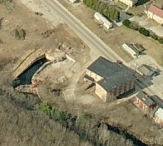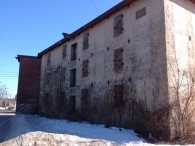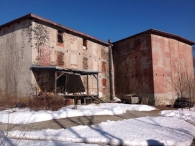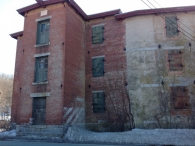Mill Record Thompson
RETURN TO ‘FIND MILLS’Disclaimer: Content for these properties was compiled in 2014-2017 from a variety of sources and is subject to change. Updates are occasionally made under Property Information, however the Connecticut Trust for Historic Preservation (dba Preservation Connecticut) makes no representation or warranty that the information is complete or up-to-date.
- Complex Name (Common)
- Masonville Mills
- Complex Name (Historic)
-
- Masonville Mills
- Address or Location
- 694 Riverside Drive, Thompson
- County
- Windham
- Historic Designation
- Associated Mill Community

- Historic Information
Companies Associated w/Complex
- Masonville Mills
Use (Historic)
Largest Documented Workforce
160
Historic Narrative
Providence merchant John Mason came to the town of Thompson in 1811 and built a wooden mill to manufacture cotton yarn. This structure no longer stands, but mills built in 1826 and 1831 remain from the early days of the village of Masonville. The 1826 mill held 2,500 spindles. The attached 1831 mill capacity was also 2,500 spindles. In 1848 William Grosvenor, a Providence physician, took over the mills. (In 1868 the village was accordingly renamed Grosvenordale.) With expansion of the original wooden mill the capacity of the complex reached 8,000 spindles by 1850, when there were also 189 looms; 80 males and 80 females worked in the three mills. The principal output was fine sheetings. In 1860 employment had fallen to 75 males and 75 females, but there was more machinery (13,500 spindles and 300 looms) and the quantity of output had doubled. (Roth)
- Architectural Information
Number of Existing Buildings
Two (2) blocks.
Dates of Construction
1826, 1831
Architect
n/a
Builder
n/a
Building Type
Architectural Description
The 80' x 40' 1826 mill has walls of coursed rubble. Window openings are framed with granite sills and lintels and have brickwork up the sides. Floors are tied into exterior walls; the ends of the tie rods are not threaded and secured with nuts to the tie plates, but rather are simply peened over the plates. There is no stair tower; freight doors open to each floor in the center of the east wall. The attic and clerestory monitor roof have been removed, leaving three stories and a near-flat roof. The attached 1831 mill differs markedly from its predecessor. Its walls are brick, and while the stone mill parallels the street, the brick mill is sited gable-end to it. This facade has a central stair tower with freight openings. Now 3-story, the 1831 mill has also lost its clerestory monitor. Sills and lintels are granite, and peened tie rods connect floors to walls. It is 14' longer and about the same width as the 1826 mill. Due east of the mills are four 2 1/2-story, double-entry dwellings with the same walls and window treatment as the 1826 mill. They have central chimneys and gable roofs with trapdoor monitors. Just south of the mills are four similar houses except with brick walls, like the 1831 mill. It seems probable that the two groups of houses were built at the same times as the respective mills. There are also two boarding houses from a later period; both have four entries, clapboard walls and gable roofs. (Roth)
Exterior Material(s)
Structural System(s)
n/a
Roof Form
Roof Material
n/a
Power Source
Condition
n/a
Condition Notes
n/a
- Property Information
-
Specific Location
One 0.65 acre parcel between the French River to the west and Riverside Drive to the east, just south of the high school complex.
Adjacent To
Exterior Visible from Public Road?
Yes
Parcel ID / Assessor Record Link
- 63/ 94A/ 1/A / Link →
Acreage
0.65
Use (Present)
n/a
- Sources
-
Form Completed By
n/a
Date
n/a
Bibliography
- Roth, Matthew, et al, Connecticut: An Inventory of Historic Engineering and Industrial Sites (Washington DC: SIA, 1981).
- Representative View(s)Click on image to view full file







